Menstrual cup
Short & Compact
- Safe and discreet protection during menstruation for up to 8 hours as a reusable alternative to tampons and pads
- Menstrual cup with cotton storage bag
- Hygienic and easy removal thanks to discreet pull tab
- Cup: 100% medically approved TPE; storage bag: cotton
- Size 1 : 23 ml, pink; Size 2: 33 ml, dark pink
Menstruationstasse, Gr. 2
Size 1
Size 2
Original price was: 17,99 €.13,99 €Current price is: 13,99 €.
In stock
incl. 7% VAT zzgl. Versand
Delivery information
- Product dimensions packed (lxwxh): 5.0 x 7.6 x 15.0 cm
- Product weight: 0.53 kg
- Scope of delivery:
-
- 1x folding box with menstrual cup size 2 (33 ml capacity)
- 1x storage bag
- 1x use
-
This might also interest you:
Product information
Our ELANEE menstrual cup offers up to 8 hours of discreet protection during menstruation and is a reusable alternative to tampons and pads.
The flexible cup is made of 100% medically approved TPE and fits snugly against the vaginal wall, providing reliable protection against menstrual fluid leakage.
There are two ml markings on the inside of the cup to indicate the filling quantity.
The special feature of our menstrual cup: it can be removed hygienically and easily using the unique, discreet pull tab or alternatively like conventional period cups.
The enclosed cotton storage bag is used to store the cup.
The ELANEE menstrual cup is suitable for women from the first to the last period and is available in two sizes:
Size 1: light to normal period, soft material
- Diameter: 40 mm
- Length without pull tab: 57.9 mm
- Length with pull tab (2 hearts): approx. 65 mm
- Capacity: 23 ml
Size 2: heavy period, harder material for a strong pelvic floor, after vaginal delivery
- Diameter: 45 mm
- Length without pull tab: 64.3 mm
- Length with pull tab (2 hearts): approx. 75 mm
- Capacity: 33 ml
Areas of application
During your period, you want reliable, discreet protection that is comfortable to wear so that you don’t have to do without anything in everyday life.
Our menstrual cup is suitable as safe period protection:
- for everyday use, even during sleep
- For a visit to the sauna or while swimming
- In sport
It can be used from the first menstruation onwards.
It is important to us that you enjoy your product for as long as possible.
We would therefore like to give you some information and tips on how to use our menstrual cup to protect the material.
Carefully inspect
After purchasing the product, you naturally want to inspect it in detail.
Please do not pull on the pull tab with full force, as this pulling force is not comparable to pulling the cup out of the vagina when the vaginal muscles are relaxed.
Relax when removing
Relax your pelvic floor when removing the cup so that it slides gently out of the vagina.
The cup is made of a very resistant material.
However, if you feel a lot of resistance when pulling the cup out or have difficulty “letting go”, it is better to use the grip surface to remove the cup so that the pull tab remains intact!
Classic or innovative?
With our menstrual cup, you have a choice: it can be removed using the pull tab or, like other menstrual cups, using the grip.
Or why not use both options?
Correct cleaning
Hygiene is the be-all and end-all. Please follow the instructions in the user manual when cleaning.
Boiling for too long or using the wrong cleaning agents can damage the material in the long term.
Functionality
The menstrual cup is inserted vaginally to collect menstrual secretions.
The cup is folded during insertion, unfolds in the vagina and fits snugly against the vaginal wall thanks to the flexible material, preventing menstrual blood from flowing past it.
A special mechanism makes it easier to remove the cup.
The heart-shaped handle at the end of the pull tab, which is connected to the rim area, is pulled.
The upper rim of the cup is released from the vaginal wall by the pulling force, allowing the cup to be easily pulled out of the vagina.
Alternatively, our menstrual cup can also be removed like conventional period cups.
Further information & tips
General
What is a menstrual cup?
Menstrual cups are small cups that are used to collect menstrual secretions.
Menstrual cups…
- are a reusable, discreet alternative to conventional tampons.
- can absorb more fluid than most tampons.
- are usually made of medical silicone or thermoplastic elastomer (TPE).
- Thanks to the material, the mucous membranes do not dry out even with slight bleeding.
- produce less waste than tampons and pads because they can be reused for several years.
Menstrual cups are inserted vaginally during your period.
In contrast to tampons, they sit just above the vaginal opening but below the cervix and therefore catch the period blood.
When the cup is full or after a maximum of 8 hours of use, the menstrual cup is removed, the contents emptied into the toilet and the cup reinserted after a brief cleaning under running water.
How does the ELANEE menstrual cup differ from other cups?
In contrast to conventional menstrual cups, the ELANEE menstrual cup has a discreet, patented pull tab with which it can be removed easily and hygienically.
However, the menstrual cup can also be removed like conventional cups.
How do you choose the right size of menstrual cup?
The size of a menstrual cup depends on many factors:
- Age
- Births
- Sporting activity
- Strength of the pelvic floor
- Intensity of bleeding
- Height of the cervix
If you have strong pelvic floor muscles, it is usually advisable to choose a menstrual cup made of harder material so that it can unfold optimally after insertion.
Detailed explanations on how to measure the position of the cervix can be found on the internet.
Depending on the height of the cervix, you will need a shorter or longer menstrual cup.
The exact dimensions of our menstrual cups can be found in the product information tab.
Can the menstrual cup be used if I am using an IUD?
In principle, there is no reason not to use a menstrual cup if you are using a copper or hormonal IUD for contraception.
It is important to detach the edge of the menstrual cup from the vaginal wall and only then pull the cup out.
In rare cases, it is possible that the return string of the IUD is so long that it is caught when the cup is pulled out.
If you feel a sharp pain when removing the cup, you should stop immediately.
We recommend removing our menstrual cup using the pull tab, as this means you don’t have to reach as far into the vagina to get the cup out.
This reduces the risk of pulling the thread of the IUD.
If you have any questions or are unsure, you should consult a doctor.
Application
How do you insert a menstrual cup?
Tip before first use: Knead our menstrual cup in one hand for approx. 30 sec.
in one hand to make the material softer and more flexible.
Wash your hands thoroughly before inserting the menstrual cup.
You have the following options when folding the menstrual cup:

You have the following options when folding the menstrual cup:
C-shape (a) or
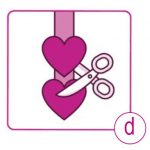
Shell shape (b).
Make sure that the side with the pull tab is pressed inwards.
Hold the folded cup with your thumb on one side and your index and middle fingers on the other, as far down as possible.
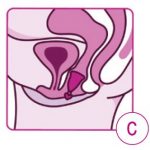 Try out the position in which insertion is most comfortable for you: standing or squatting, with one leg raised or sitting on the toilet.
Try out the position in which insertion is most comfortable for you: standing or squatting, with one leg raised or sitting on the toilet.
Relax your vaginal muscles and spread your labia with your free hand.
Insert the folded menstrual cup into your vagina in the direction of your coccyx until the grip surface is approx. 2 cm above your vaginal opening.
The menstrual cup will open before it is fully inserted and sits at the lower end of the vagina (c).

To check whether the menstrual cup is properly seated, grasp it at the lower end (not by the handle) and turn the cup once half a turn in any direction.
If the menstrual cup can be turned easily, you can be sure that it is fully open.
If you have the feeling that the pull tab is too long or is in the way, you can cut off one of the hearts (d).
What should you do if the menstrual cup does not open?
- Insert the menstrual cup again and follow the instructions in the instructions for use step by step (point 6).
- Relax your vaginal muscles.
Grasp the menstrual cup at the lower end (not by the handle or the heart) and turn it half a turn or squeeze the area slightly so that the cup opens. - Try a different folding method:
- If you have difficulty inserting it, try using a little lubricant, such as our intimate hydrogel.
- Practice, practice, practice… Don’t despair if you don’t get it right first time.
Take time to practise insertion and removal, preferably a few days before your period.
Take breaks in between so that the vaginal muscles relax and the tissue is not irritated.
Every woman’s anatomy is different, which is why not every cup or cup size fits every woman. Perhaps a menstrual cup in a different size is the right choice for you. You can find more information under the question “Which size suits me?”.
What can you do if the menstrual cup is leaking?
- Insert the menstrual cup again and follow the instructions in the instructions for use step by step (point 6).
- Check that the menstrual cup is in the correct position.
Make sure that the cup has fully unfolded (“popped open”) after insertion and is in contact with the vaginal wall. - If there is no blood in the menstrual cup, check the position of your cervix (instructions are available on the Internet).
The cup may not be sitting correctly under the cervix.
Adjust the position of the menstrual cup accordingly or choose a different size. - If you only notice a little blood in your underwear, it may be blood from changing the cup.
- If a lot of blood flows past the menstrual cup, the cup may be full and should be emptied more often.
Can you feel the menstrual cup when you wear it?
If the menstrual cup is inserted and placed correctly, it is usually not noticeable.
If you have an uncomfortable feeling when wearing it, this can have various causes:
- The cup sits too high or too low.
- The cup has not fully unfolded.
- The selected size is not suitable.
- The material thickness is not suitable.
If the pull tab is too long or annoying, one of the hearts can be cut off.
Can the menstrual cup be worn for longer than 8 hours?
Good menstrual hygiene is essential to minimize the risk of toxic shock syndrome (TSS).
We therefore recommend a maximum wearing time of 8 hours.
Correct cleaning (only for reusable menstrual products) and hygienic use (e.g. washing hands) are also particularly important.
How do you remove the menstrual cup?
Depending on the intensity of your bleeding, you should empty the menstrual cup several times a day to prevent it from overflowing.
We recommend removing and cleaning the cup after a maximum of 8 hours.
Wash your hands thoroughly before removing the menstrual cup and adopt a comfortable posture.
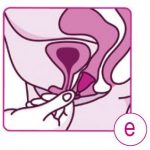 Variant 1
Variant 1
- Relax your vaginal muscles, grasp the heart of the pull tab with your thumb and index finger and pull gently (e).
- Pull the cup down using the pull tab until it sits loosely in your vagina.
- Release the heart and grasp the cup by the grip surface to pull it out of your sheath.
Variant 2
You can also remove the ELANEE menstrual cup like a conventional menstrual cup.
- Relax your vaginal muscles and gently pull on the grip surface until you can grasp the lower part of the cup.
- Squeeze it together and pull the cup out of your vagina.
Alternatively, you can insert two fingers between the vaginal wall and the menstrual cup and then pull it out.
The markings on the inside of the cup make it easy to read the fill level:
- Size 1: 10 ml and 20 ml
- Size 2: 15 ml and 25 ml
Empty the contents into the toilet.
Clean the menstrual cup and reinsert it.
Material & cleaning
What is TPE and why is the ELANEE menstrual cup made of TPE?
TPE (thermoplastic elastomers), like silicones, are plastics.
The positive thing about menstrual cups made of TPE is that they adapt better to the individual vaginal wall.
Menstrual cups made of silicone tend to form a rigid ring after unfolding without taking the individual anatomy into account.
TPE adapts better here – especially at body temperature.
Various aspects have led us to choose medically approved TPE as the material for our menstrual cups.
These include
- Lower energy consumption due to short cycle times during production.
- TPE is not suspected of causing allergies.
- TPE is a very pure material.
This makes it possible to record the ingredients in detail, which means that compliance with REACH is not a problem. - TPE waste can be 100% recycled (silicone is rarely completely recycled and the process is very complex).
How hard is the material of the menstrual cups?
Just as varied as the selection of cups are their degrees of firmness.
We have opted for a softer material (size
1) and slightly firmer (size
2) in order to cover the different needs of our users (pelvic floor strength etc.).
Why does the menstrual cup only need to be cleaned for 3 minutes?
As part of the development of our menstrual cups, we carried out various tests to find out how long the menstrual cup needs to be boiled in order to kill the most common bacteria in the vaginal flora.
The result: the menstrual cup should remain in boiling water for 3 minutes.
Incidentally, some of these bacteria die on contact with oxygen.
Can the menstrual cup also be cleaned in the microwave?
The tests to determine the boiling time of our menstrual cup were carried out in a pot of boiling water.
This makes it easy to determine the point at which the water boils and how long the menstrual cup must then remain in the boiling water.
Irrespective of the wattage, microwaves have different power levels.
The time at which the water boils can therefore vary with each appliance.
If you still want to clean your menstrual cup in the microwave, we recommend a slightly longer cleaning time (more than 3 minutes) to ensure that the water in the container boils.
Toxic shock syndrome
What is TSS and is the risk higher with menstrual cups or tampons?
Toxic shock syndrome (TSS) is an infectious disease caused by bacteria in a wound or in the mucous membrane.
There are no clear findings from studies or expert opinions on whether the risk of contracting TSS is higher/lower with tampons or menstrual cups.
The issue of maximum wearing time is also controversial.
Basically, good menstrual hygiene is essential, regardless of which hygiene product is used during menstruation.
As menstrual cups are reused, correct cleaning and hygienic use (e.g. washing hands) is particularly important.
To keep the risk of infection as low as possible, we recommend a maximum wearing time of 8 hours and cleaning the menstrual cup before and after sleeping.
Material & cleaning
Material:
- 100% medically approved TPE
The ELANEE menstrual cup is cruelty-free and free from animal ingredients.
Cleaning instructions:
Before the first use and after each period:
Boil the ELANEE menstrual cup in a pot for 3 minutes in a water bath.
During the period:
After emptying the menstrual cup, clean it thoroughly with a mild soap and rinse it under running water.
If you do not have the opportunity to rinse the cup (e.g. in a public toilet), you can alternatively wipe it out with toilet paper or a tissue and clean it thoroughly at the next opportunity.
The menstrual cup can be disposed of with normal household waste.
Please separate the individual components of the packaging and dispose of them in the appropriate recycling system.
Please observe the regional disposal guidelines.
Downloads
You must be logged in to post a review.
Also available here:
No Results Found
The page you requested could not be found. Try refining your search, or use the navigation above to locate the post.



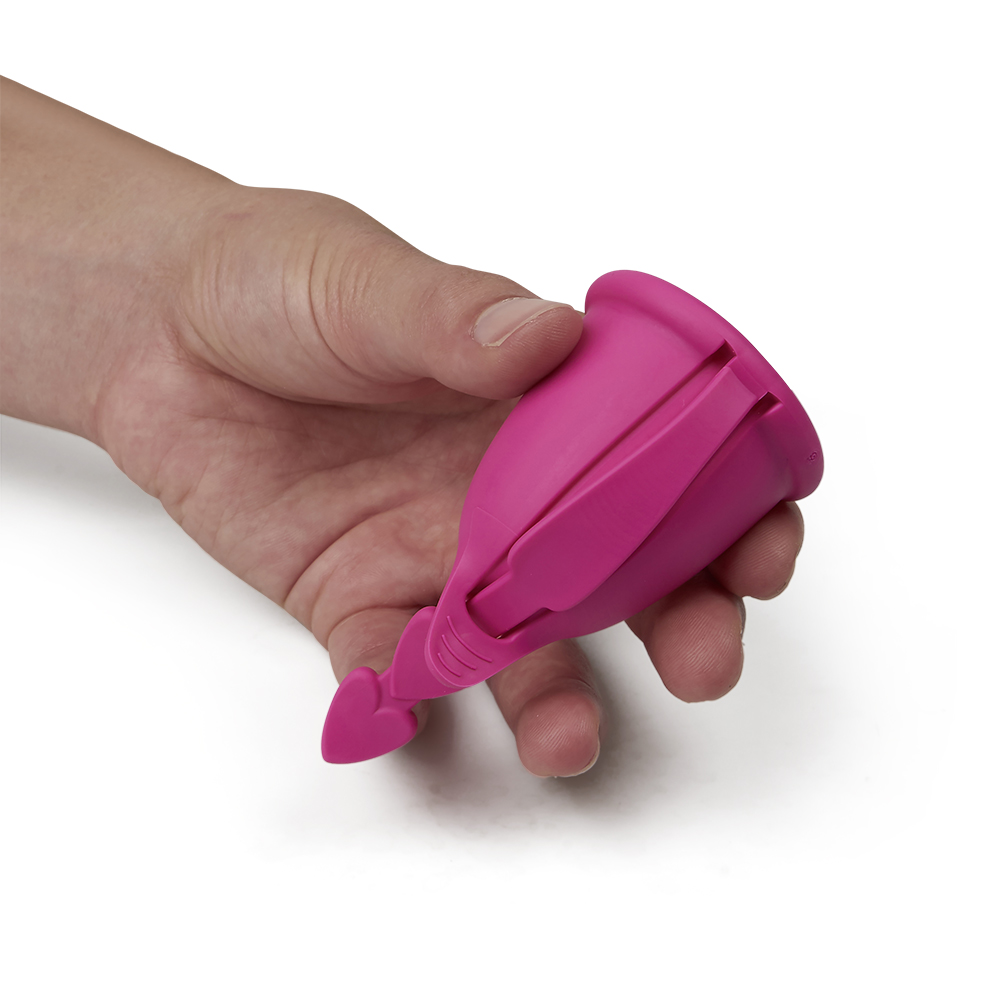
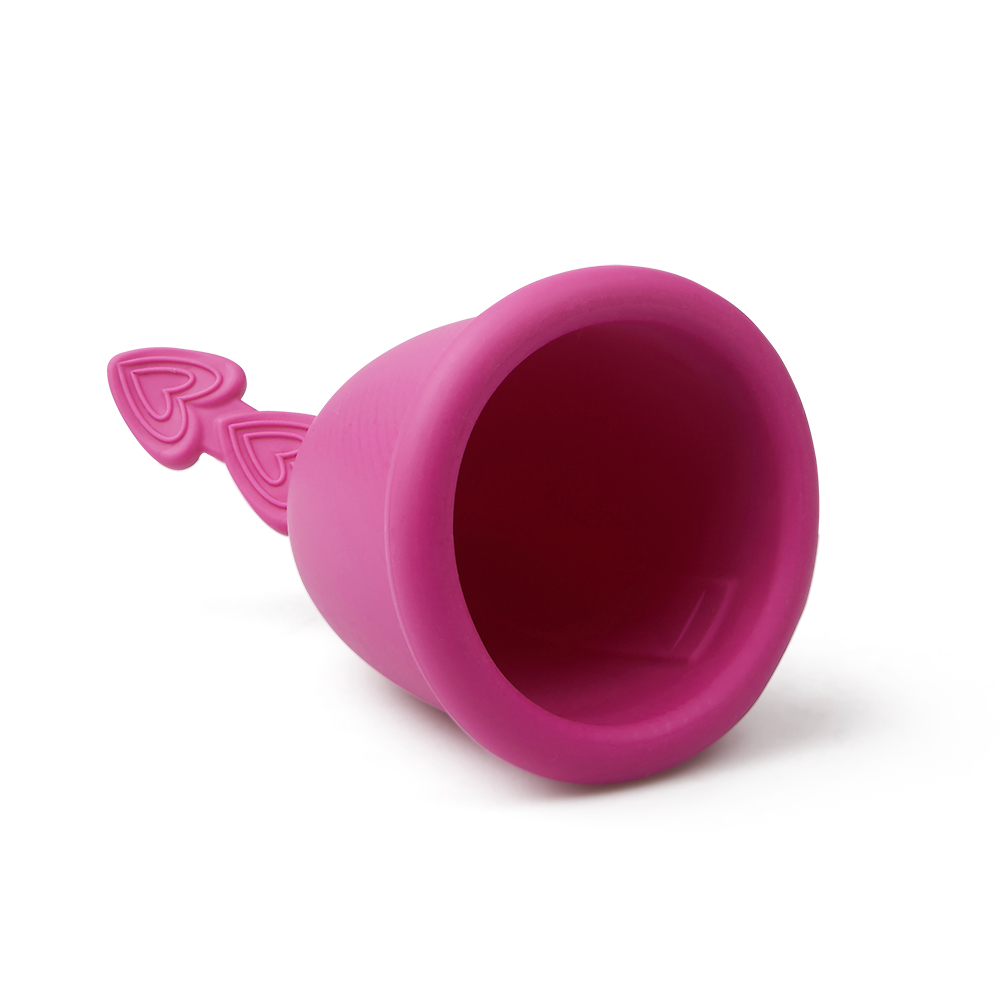

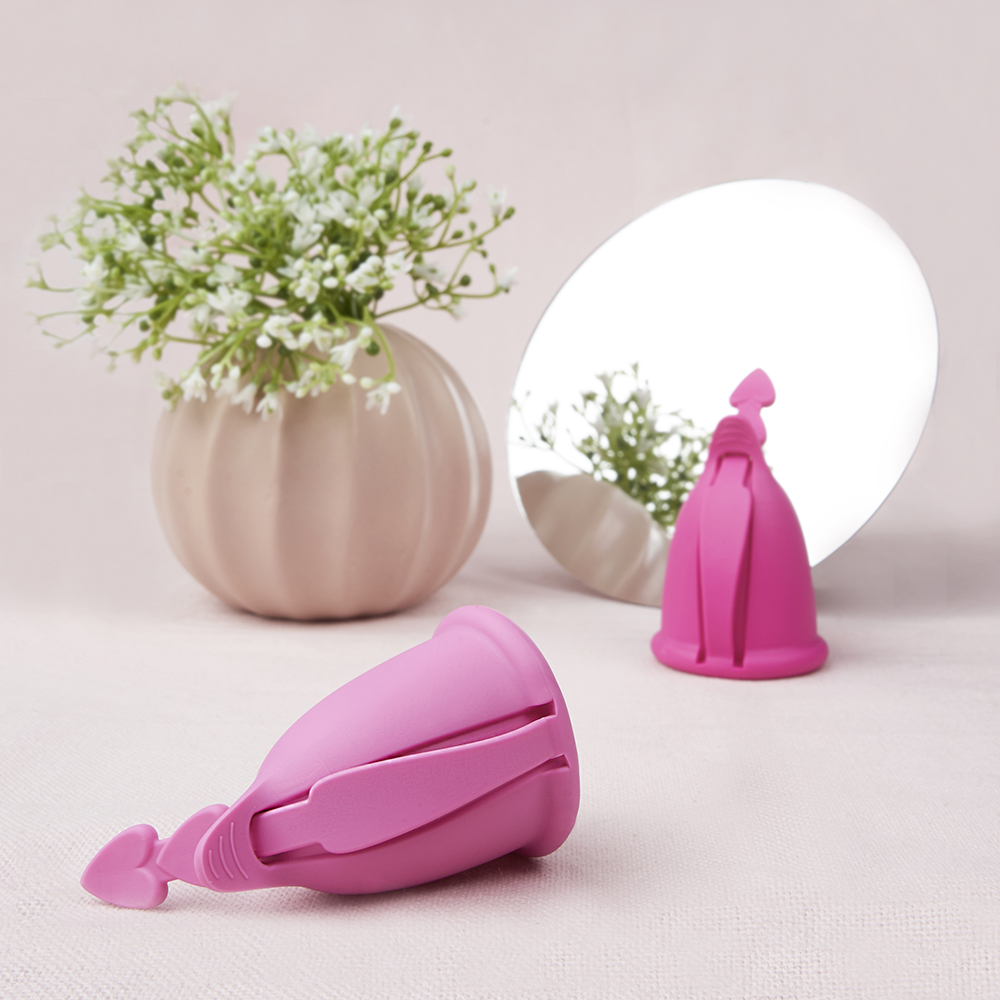






Reviews